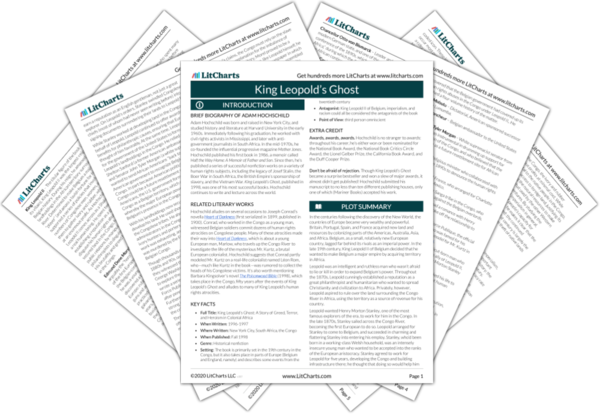Leopold made another huge tactical error by giving impartial judges direct access to the Congo. In the past, Leopold had been careful to control all information flowing in and out of his territory; now, he blundered by letting judges see the atrocities first-hand. However, Leopold was able to mitigate some of the damage by circulating a bland summary of the judges’ report—showing, once again, how Leopold used obfuscation and confusion to prevent the shocking truth about the Congo from getting out.
